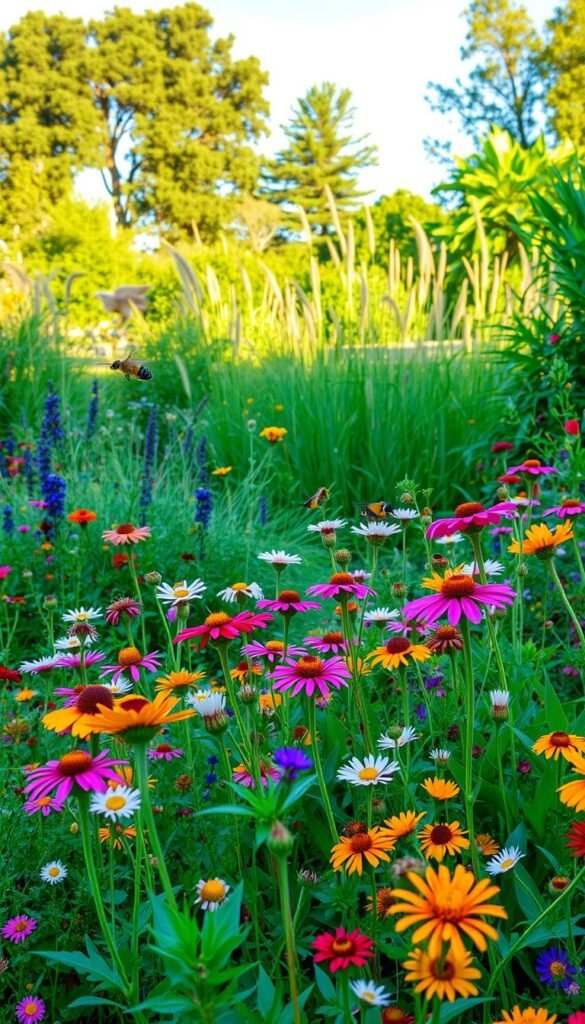Your outdoor area holds untapped potential to become a vibrant hub for nature. By choosing regionally appropriate flora, you create living connections between fragmented habitats. This approach helps sustain intricate relationships formed over millennia, like monarch caterpillars that only survive on milkweed leaves.
Even modest spaces matter. A balcony with carefully selected greenery can feed essential pollinators while filtering rainwater. Research shows these natural solutions host 29x more soil microorganisms than conventional landscapes, boosting underground biodiversity.
Traditional grass lawns cover 40 million acres nationally – space that could instead become wildlife corridors. When you convert part of your yard, expect quick results. Butterflies often appear within days, followed by birds seeking caterpillars. Your efforts join a growing movement detailed in habitat restoration guides.
Beyond environmental benefits, these spaces become outdoor classrooms. Children discover intricate food webs firsthand, watching bees gather pollen or spiders weave webs. You’ll gain exercise through seasonal maintenance while creating beauty that changes with the months.
Every flowering stem matters in reversing insect population declines. Your choices today help preserve specialized partnerships that non-native alternatives can’t replace. Together, these small actions form networks sustaining entire ecosystems.
Understanding the Importance of Native Plants and Pollinators
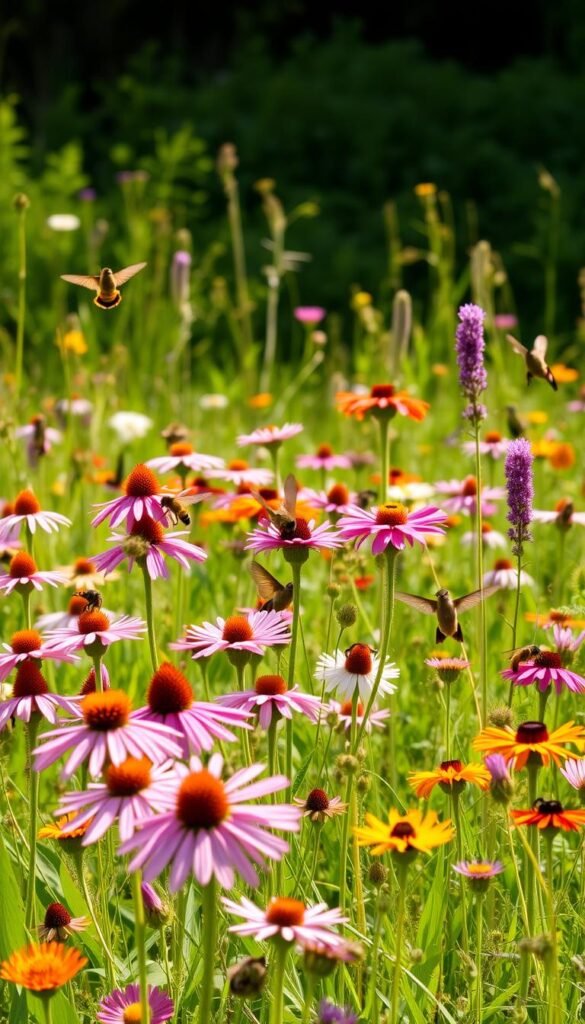
The natural world thrives on connections we often overlook. Regional flora and fauna depend on each other in ways shaped over thousands of years. For instance, certain insects only recognize specific flowers as food sources, creating partnerships that sustain entire ecosystems.
Nature’s Interconnected Web
Specialized relationships between species keep environments balanced. Take milkweed and monarch butterflies: caterpillars evolved to safely eat toxic leaves, while the plant relies on them for pollination. This dance continues underground too—native roots host microbes that enrich soil, supporting healthier growth.
“When one species disappears, it’s like losing a thread from nature’s tapestry.”
Why Your Space Matters
Even small green areas become lifelines. Birds seek caterpillars nesting in stems, while bees gather pollen from seasonal blooms. Research shows gardens with regionally adapted species attract 8x more beneficial insects than those with non-native varieties.
| Feature | Native Species | Non-Native Species |
|---|---|---|
| Wildlife Support | High | Low |
| Soil Health | Improves Over Time | Requires Fertilizers |
| Water Needs | Low | High |
| Maintenance | Minimal | Frequent |
Want to dive deeper? Explore the essential role of regional flora in preserving biodiversity. Your choices help reverse habitat loss—a critical step as studies show 70% of land animals now face survival threats.
Planning Your Native Plant Gardening Journey
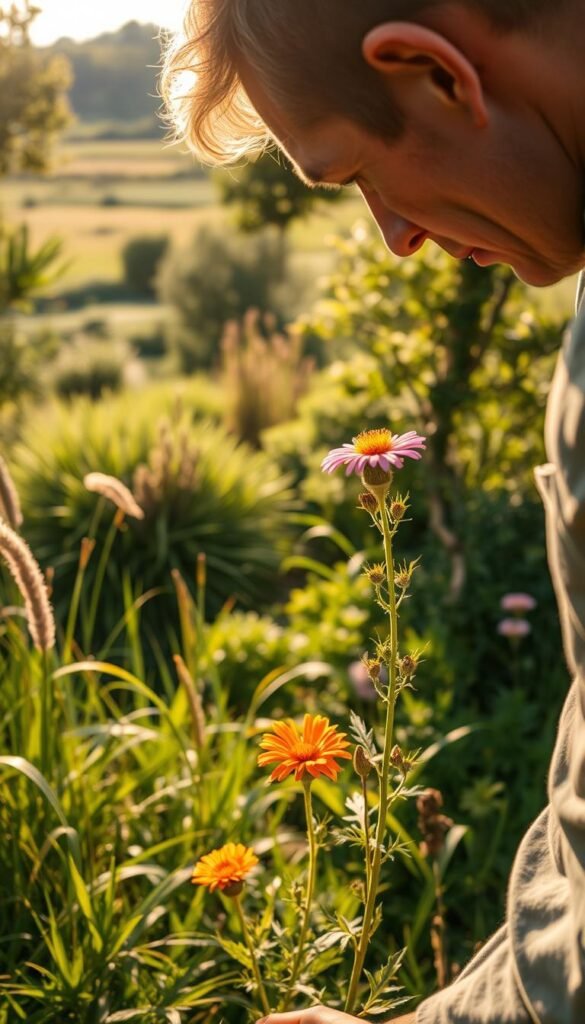
Creating thriving green spaces begins with smart preparation. You’ll want to balance your household’s needs with nature’s requirements, ensuring your outdoor area serves both people and pollinators effectively.
Assessing Your Yard’s Sunlight, Soil, and Space
Start by sketching your property’s layout. Note where sunlight hits longest during summer afternoons and which corners stay shaded. Dig test patches to check soil texture—sandy soils drain fast, while clay holds moisture. One gardener discovered their “problem spot” actually hosted rare ferns when they stopped fighting the natural dampness.
Gathering Essential Tools and Resources
Arm yourself with these key items for success:
- Soil test kit ($15-30 at garden centers)
- Rain gauge to track water patterns
- Plant identification apps like iNaturalist
| Soil Type | Best Plants | Water Needs |
|---|---|---|
| Sandy | Butterfly Weed | Low |
| Clay | Swamp Milkweed | Medium |
| Loamy | Black-Eyed Susan | Low-Medium |
The Lady Bird Johnson Wildflower Center’s database helps match species to your conditions. Pair this with sustainable landscape principles for truly earth-friendly designs. Remember, observing your space through all seasons reveals hidden opportunities—like winter seed heads that feed birds.
Native Plant Gardening: Supporting Local Pollinators & Wildlife
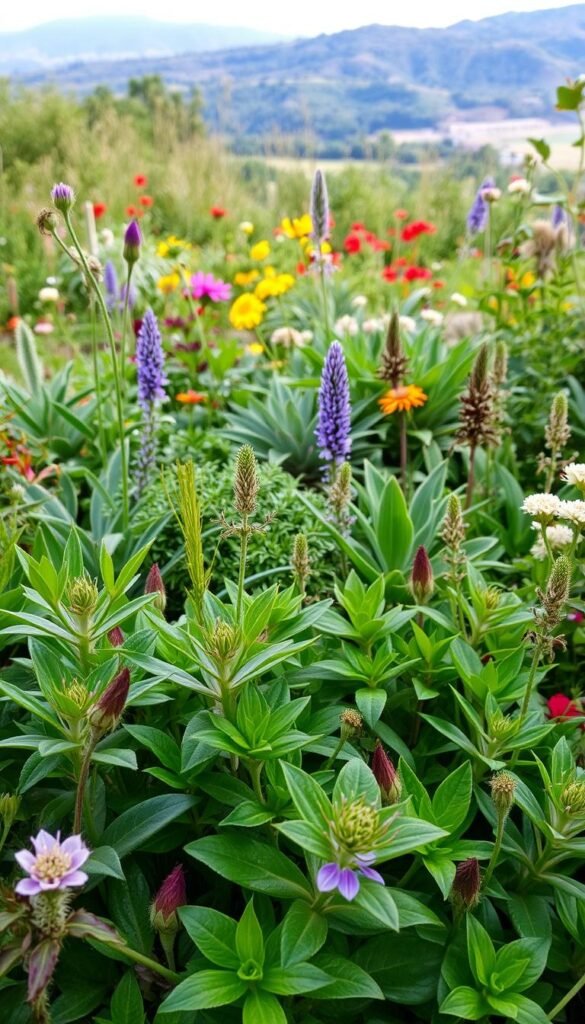
Ecosystems thrive when tailored to local conditions. Start by exploring the Pollinator Partnership’s 32 regional guides—your roadmap to matching greenery with your yard’s unique climate and soil composition. These free resources simplify choices for new growers while helping seasoned gardeners refine their plantings.
Smart Species Matching
Visit nearby parks like Santa Monica Mountains or Chattahoochee River areas to see thriving ecosystems in action. Notice how white oaks support entire insect communities, or how coral honeysuckle’s tubular flowers draw hummingbirds. Online tools from Audubon Society and National Wildlife Federation generate custom lists using your ZIP code and sun exposure data.
Layered Living Spaces
Create vertical interest with diverse vegetation. Plant low-growing asters for autumn color beneath black willows in damp areas. Add switchgrass to stabilize slopes while offering winter cover for small animals. Goldfinches flock to woodland sunflower seeds, while broom sedge’s fluffy tops become nesting material come spring.
Remember: Even a 10×10 area makes a difference. By combining trees, shrubs, and groundcovers, you’ll sustain pollinators year-round and build resilient habitats that mimic untouched wilderness.
Implementing Your Garden Plan with Practical Tips
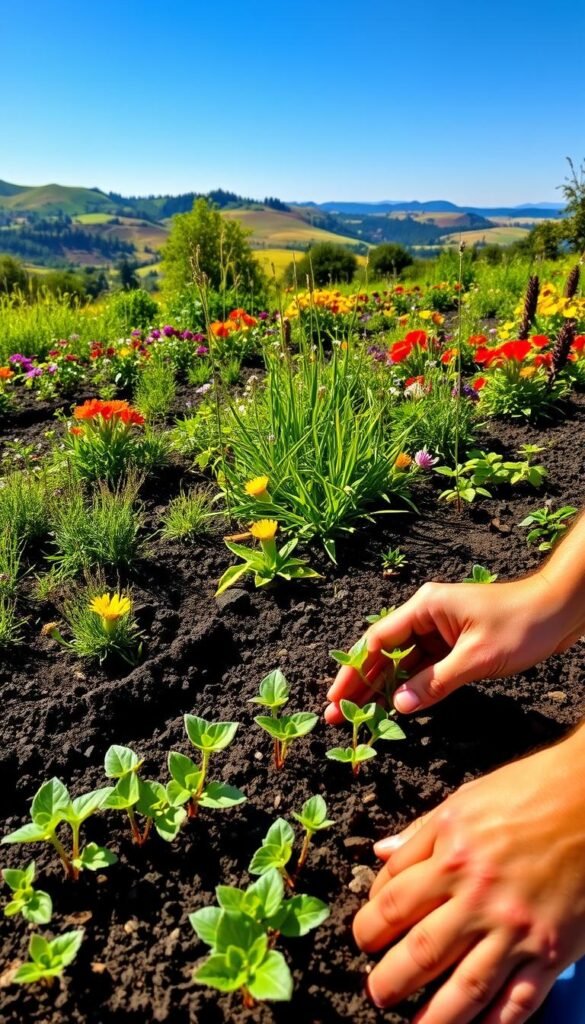
Ready to transform your space? Successful habitat creation starts with thoughtful execution. Let’s explore hands-on strategies to bring your vision to life while nurturing biodiversity.
Preparing the Land and Removing Invasive Species
Begin by clearing unwanted growth carefully. Contact your state’s agricultural extension office for removal guides—some aggressive species require specific disposal methods. For large trees, consider girdling (removing bark rings) instead of full removal. This preserves habitat while stopping invasive spread.
Planting Techniques: Seeds Versus Nursery-Started Plants
Choose your approach based on timeline and budget:
| Method | Cost | Time to Bloom | Best For |
|---|---|---|---|
| Seeds | $5-20/lb | 1-2 years | Large areas |
| Nursery Plants | $8-15 each | Same season | Instant impact |
Scatter seeds during frost periods—winter sowing lets melting snow bury them naturally. For potted plants, dig holes slightly wider than roots and mix in compost.
Watering, Mulching, and Regular Garden Maintenance
After planting:
- Water deeply weekly for first 6 weeks
- Apply 3″ wood chip mulch to retain moisture
- Leave seed heads and stalks standing through winter
These practices create a chemical-free haven while supporting beneficial insects. Remember—messy is good! Leaf litter shelters butterfly larvae, while decaying logs host beetles.
Your Native Garden Journey: Bringing It All Together
Your efforts now set the stage for a living landscape that evolves daily. Each season brings new discoveries—beetles under fallen leaves or sparrows collecting nesting material. These signs show your space is becoming a thriving ecosystem.
Healthy soil feeds your greenery while attracting earthworms and microbes. This underground network supports the plants above, creating a cycle that sustains itself. You’ll notice fewer pests as predator insects find homes among the stems.
Track progress by jotting down visitors—a swallowtail sipping nectar or chickadees hunting aphids. These notes reveal how your choices rebuild essential connections. Even small patches of regional flowers help reverse habitat loss.
Share cuttings with neighbors to expand green corridors. Swap seeds at community events or join conservation groups. Together, these actions weave larger safety nets for vulnerable species.
Your garden grows richer each year, offering lessons in resilience. What starts as a few blooms becomes a legacy of balance and beauty. Every rooted stem reminds us that change begins right outside our doors.

